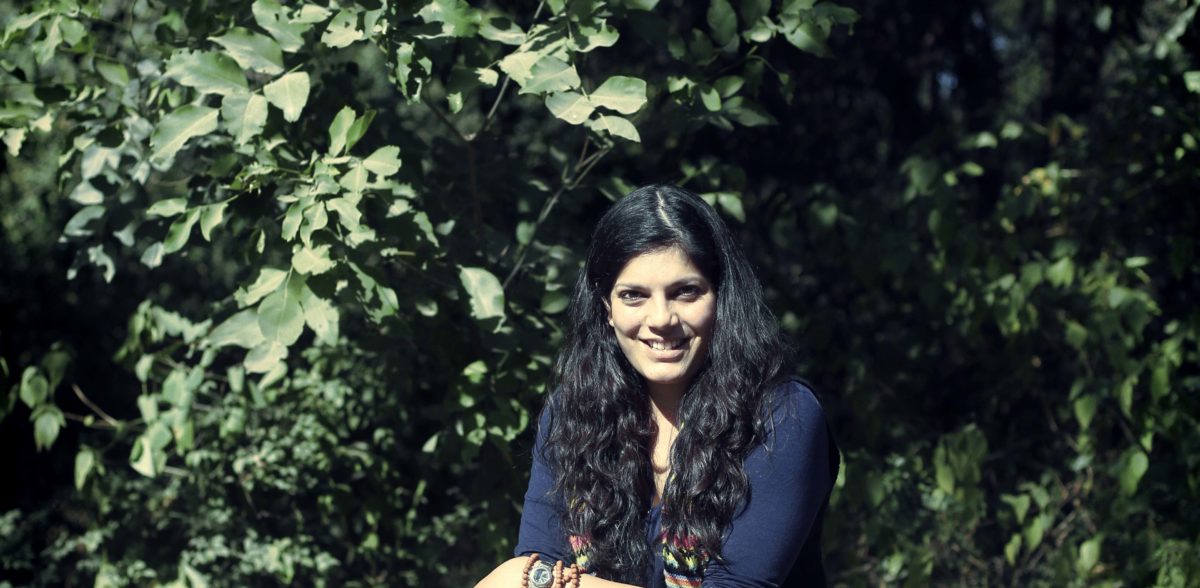Women Peacebuilders I Infocus: Amrita Tripathi

While we head towards International Youth Day on 12th August, Safecity is taking this opportunity to honour women peacebuilders through this series on Women Peacebuilders. We invited women peacebuilders to speak of their experience of using different tools towards peacebuilding in an attempt to showcase the massive change women leaders are bringing towards developing peace and to build collective learnings for those who want to be engaged in peacebuilding processes.
Series curated by Vandita Morarka
Edited by Renita Siqueira
Amrita Tripathi is a novelist and journalist, who spends most of her time online. You can find her @healthcollectif or @amritat. She writes contemporary fiction, most recently The Sibius Knot.
1. What got you started on your peace journey?
Amrita: That’s hard to pin-point. So many different strands. Let me say that amongst many conversations, I’ve been hugely influenced by Jasmeen Patheja’s Blank Noise and the concept of Action Heroes. I had submitted a piece of writing for her Writer’s Project…I also had an excerpt of my novel The Sibius Knot published in Out of Print online magazine for their issue on Sexual Violence, which went on to win a Laadli Award… many conversations, many thoughts led me here to this point in my journey. Though I wish I was doing more grassroots work!
2. How have you engaged with digital advocacy towards Peacebuilding?
Amrita: For me, the impetus behind creating The Health Collective was two-fold — one, to create and curate a site for trusted information on mental health, that is regularly updated and addresses the Indian context, and two, to ensure that this becomes a safe space for conversations, with no agenda.
The immediate trigger was the discovery (through social media) that someone in Mumbai was suicidal, and her friend didn’t know where to turn to for help. It was a tweet I saw two days late, and I was shocked and horrified to hear that they had got no leads in the interim. In a city like Mumbai, in 2016? That is unacceptable!
Lack of reliable information: Part of the problem is that we don’t see a compelling narrative around mental health in the country, and what little information we get is through the mainstream media, and it’s often sensationalised…when a celebrity commits suicide, for example. The media isn’t trained wrt best practices and doesn’t see the merit in even following the Samaritans guidelines on this front. Oh, the damage that is done! (I know this first-hand about the media blind spot, having worked in a national news channel for a decade, where I used to report on mental health, among other issues.)
Stigma: Additionally, one of the main issues in accessing such information (and resources) is stigma. Hence the need for a trusted, safe space. (A very successful psychologist used to tell me that she would get footfalls mainly because the entrance to her office was shared with another office / a dentist.)
The other major initiative that I’m involved with is genderlogindia: a crowd-sourced conversation on Twitter, about gender identity and rights, that hosts a different curator each week. This was set up by Nilanjana Roy in the aftermath of the December 2012 gang rape, and is now run by Noopur Tiwari, Natasha Badhwar and me. We essentially call upon people each week to take the time to curate conversations on gender rights, through whichever filter or lens they want to use. And they rarely disappoint. It’s been a wonderful journey, and is now a warm community of more than 17K tweeple.
3. What are the challenges you have faced?
Amrita: For The Health Collective: the usual challenges in terms of time and resources (human and financial)… and sometimes motivation levels. Self-doubt creeps in. But the wonderful thing about working on a cause you’re passionate about is that you inevitably find like-minded people and can pull together to create something much more wonderful than you could have imagined. Our next big goal is to kick off in non-English Indian languages, and I can’t wait!
For genderlogindia though, which is a no-cost initiative, the main challenge has been one we haven’t been able to address yet is the language issue. We don’t want to just be in English.
4. How do you think digital advocacy can be leveraged better towards Peacebuilding?
Amrita: The wonderful thing about digital is that it flatlines some hierarchies, and enables access to people and ideas many of us would have been sheltered from before. Knowledge really is a gift that keeps giving. And communication is key. I think we can all use these social / digital tools better, network more as required, even virtually, and take the trouble to ensure we have each other’s back, even online. Just as sustained trolling becomes harder to deal with when it’s coordinated, the fight back must be as robust.
Connect with us?
Send us your feedback or nominate a young woman peacebuilder you know of, write to us at [email protected]/[email protected]

